Ram V, Riccardo Federici, and Evan Cagle Build On Jack Kirby in The New Gods #3
Ram V, Riccardo Federici, and Evan Cagle’s The New Gods #3 is another attempt to go back to Kirby, firmly planted in the original source, being true to it while pushing in new directions.
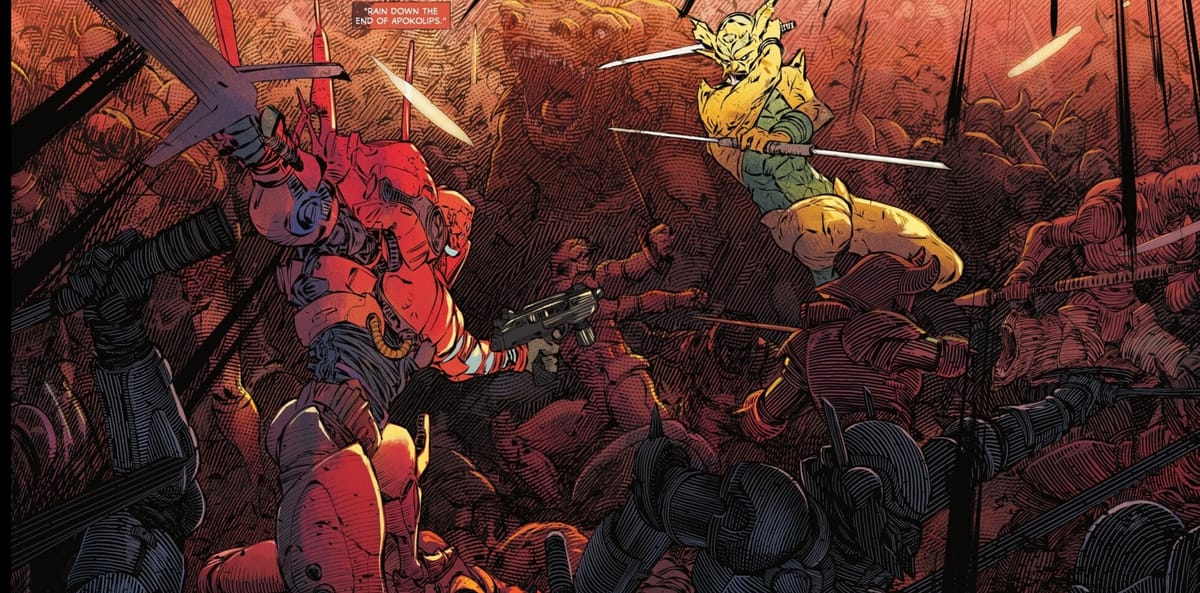
Often, The New Gods comics feel like they’re trying to outdo Jack Kirby, to one-up the King. But they try to do this by imitating Kirby. John Byrne has taken a couple of runs at Kirby’s creations but when you look at his Jack Kirby’s Fourth World, it reads more like the work of an acolyte instead of a creator. Somehow that approach worked when Byrne took on The Fantastic Four, taking on a back-to-basics approach (where the basics were named Lee and Kirby,) building something fresh out from the seeds planted long before him. But when he tried that with The Fourth World, his work ended up being derivative, never able to rise above his influences.
Grant Morrison tried to redefine the New Gods for the 21st century in Final Crisis but nothing he did ever seemed solid enough to have any permanence. The past 45 years are littered with tepid attempts to revitalize Kirby’s most esoteric creations. Walter Simonson’s Orion and Tom King and Mitch Gerard’s Mister Miracle showed the richness of these mythical beings, taking everything that Kirby did and finding new stories for these characters. They showed that new things could be done with these creations.
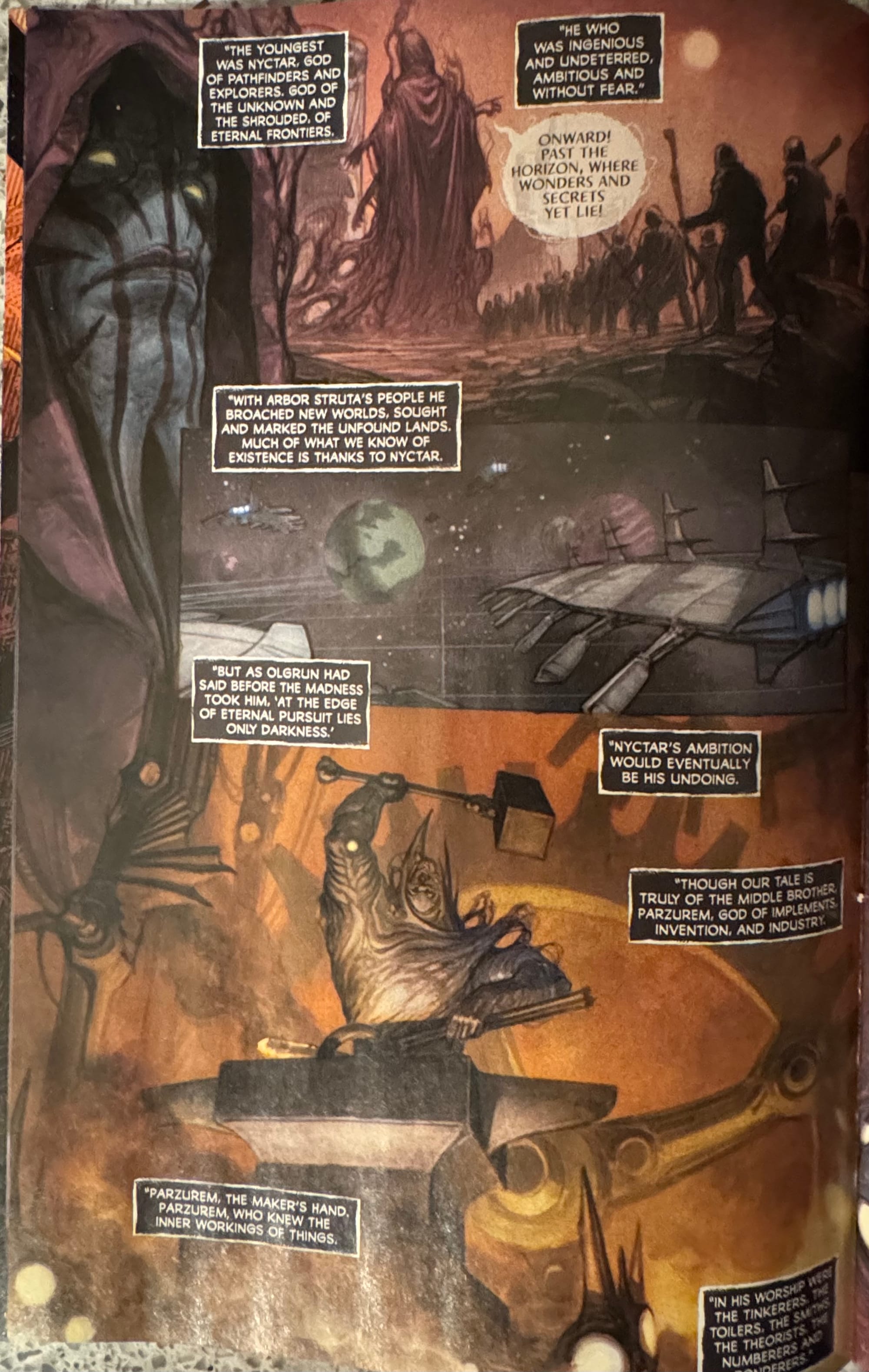
So in many ways, Ram V, Riccardo Federici, and Evan Cagle’s The New Gods #3 is another attempt to go back to Kirby, firmly planted in the original source, being true to it while pushing in new directions. With Federici on art, Ram V tells a whole new myth about the last days of the Second World and the gods who were there for that ending. These sibling gods are so much more alien than Kirby’s gods but so much more human as well. Ram V leans into Federichi’s austere visuals to expand on the old stories and create the mythology that characters like Darkseid, Orion, and Mister Miracle come out of. It’s additive to Kirby’s storytelling, building on it rather than trying to rebuild it.
This story of these elder gods of the gods that we know sets up the new conflict that V and Cagle have been slowly introducing since the first issue. And like Kirby, V and Federici tap into the humanity of these Second World gods., almost religious, The reason that Kirby’s original stories worked is that his cast was full of colorful, intriguing, and relatable characters. They were gods but they had daddy issues or were trying to find a new life away from their fate or destiny. They were high and lofty but they were down in the gutters with us. V and Federici can find that equilibrium between godhood and relatability with these new gods.
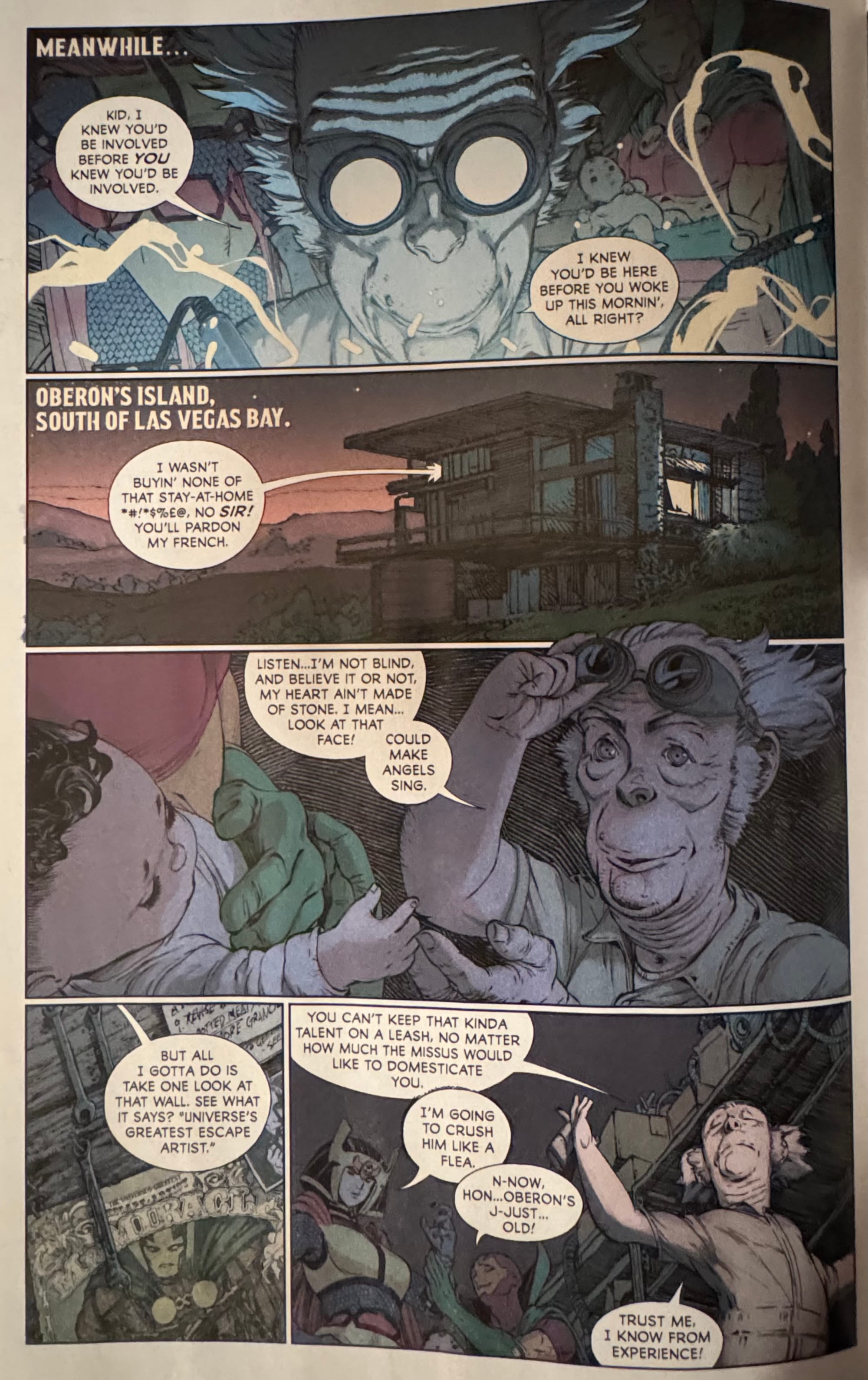
Cagle only has a couple of pages in this issue but his sequences bring this cosmic story back down to earth, focused on Mister Miracle, Big Barda, their daughter Liz, and Oberon, one of the best sidekicks in all of comics. Where the Federici pages are lofty, Cagle’s pages are personable, full of warm banter, and live between these characters. V writes these sequences for both artists to show the scope of this story. The parts of the Second World gods are mythic, almost religious, while the story of Mister Miracle is a blending of superheroics and married life dramedy. Cagle also gets to like both parts of the story as the descendants of those Second World gods invade the Darkseid-less Apokolips.
Now in three issues, one of the most impressive things this series has done is to be both grand and personal. V writes on both a grand scale and simultaneously an intimate one and that’s when these characters work best. They may fight for the sake of all creation but they’re also fighting for each other. That was apparent from the first issue when Orion met Mister Miracle on a bench and Orion asked the closest thing he has to a brother to save him from himself. Each issue has just built on this, using small, personal moments to provide an emotional anchor for the grandiosity of these god-like beings. The introduction of Oberon to this issue as a sweet and caring third wheel to Mister Miracle and Big Barda is a welcome contrast to the machinations of the three Second World gods.
And then there’s Metron. He’s usually written either as an enigmatic riddle or a Greek chorus always part of but apart from the rest of the characters. He’s the observer or the one playing chess while everyone else is playing checkers. He’s doing a bit of that in this issue but he also hints at an agency in the story that he rarely possesses. Remaining true to the character, V tweaks his dialogue just enough to hint that he may be the wildcard of whatever this story turns out to be. That’s just another way how this incarnation of The New Gods is faithful to Kirby while trying to move forward with Kirby’s characters.
With its main artist Evan Cagle limited to only a few pages, The New Gods #3 takes some time to provide a backstory for Ram V and Cagle to continue to build on. It introduces new elements to the New Gods’ story while it is firmly rooted in Jack Kirby’s spirit. Ram V, Riccardo Federici, and Evan Cagle's work in this issue feels new and old, grand and personal, apocalyptic but optimistic.



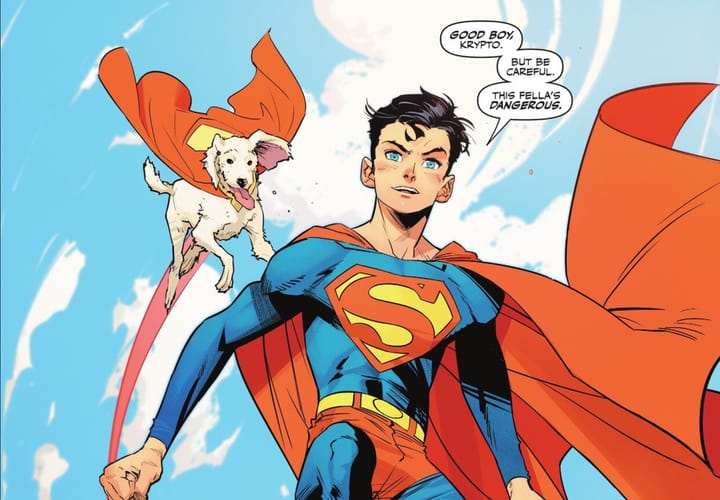
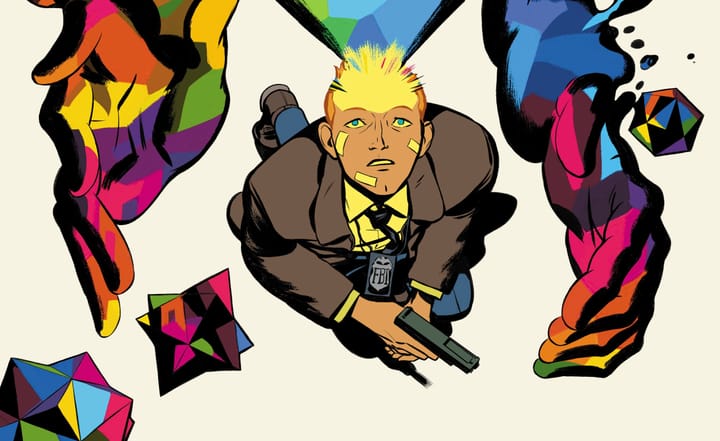
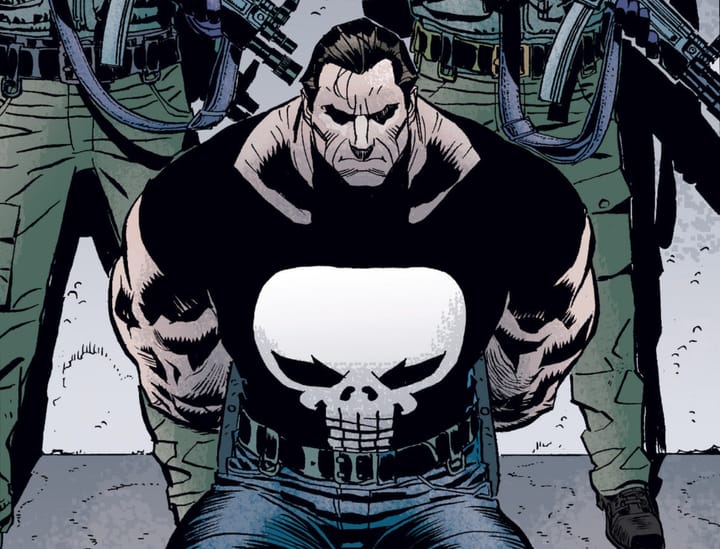
Comments ()